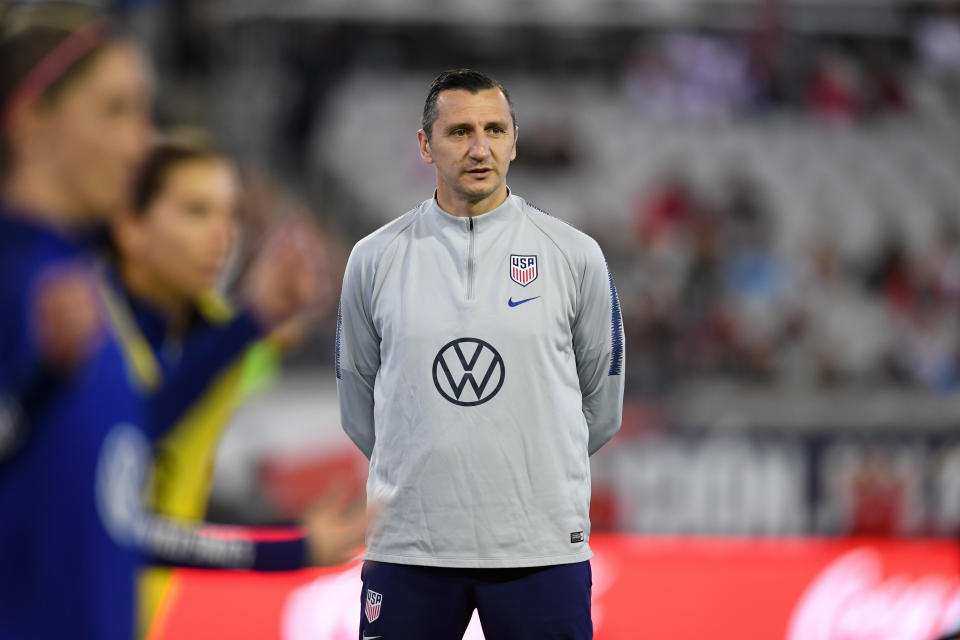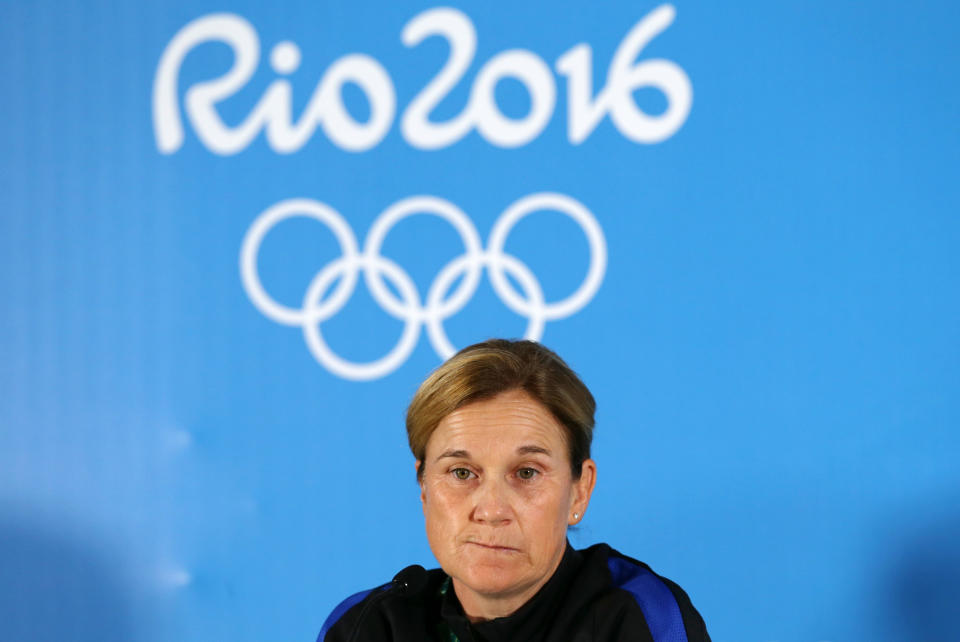USWNT's Vlatko Andonovski faces Olympic dilemma that's humbled every coach before — including Jill Ellis

For now, the U.S. women’s national team can still be called the best team in the world and the reigning world champions – but not for too much longer. Next week, the USWNT will begin their qualifying campaign for the next global tournament of the quadrennial cycle, the Olympics in Tokyo this summer.
While the Olympics aren’t quite the gauntlet of the World Cup, they offer the second-most prestigious world title in women’s soccer and, for new coach Vlatko Andonovski, the only measure of success that currently matters.
That creates a dilemma for Andonovski without an obvious solution: Should he break up the World Cup-winning USWNT in hopes it will push individual players further, or should he keep intact a core group with obvious chemistry and experience?
Differing Olympic strategies of USWNT, others
First, it’s important to understand what the USWNT and Andonovski are up against: Never before has a team won a Women’s World Cup and then a gold medal at the Olympics the following year. Even worse, there’s no obvious explanation why – everyone’s best guess has been that players must lose their drive once they win a title.
After Germany won the World Cup in 2007 and Japan won in 2011, for instance, both teams for the following years’ Olympics featured squads that almost entirely matched their World Cup rosters. Neither won gold, and the consensus was the players just didn’t have it in them after their World Cup runs.
Former USWNT coach Jill Ellis, likely aware of this challenge, tried a very different approach after the U.S. won the World Cup in 2015. Rather than defer major roster turnover until after the Olympic Games in Brazil, she decided to start a new four-cycle immediately.
Nearly half of Ellis’ World Cup-winning roster was missing at the 2016 Olympics, and up-and-comers like then 18-year-old Mallory Pugh and 22-year-old Lindsey Horan made the cut. Other players who had played backup roles were given starting spots.
Hunger and drive weren’t going to be issues – but in the end the Americans seemed to lack the composure and resourcefulness to overcome a well-drilled Sweden team. The U.S. suffered its earliest ever exit in a major tournament at the 2016 Olympics, and a novel approach to roster-building after a World Cup was suddenly blamed as a possible reason.

Now, that conflicting data puts Andonovski, who took over for Ellis in October, in a difficult position.
It’s not like the USWNT scraped through the 2019 World Cup with some lucky breaks, as was arguably the case with the 2015 team. The USWNT demolished the competition in France. Ali Krieger caught flak from international media for proclaiming the U.S. starters and substitutes comprised the best and second-best team at last year’s World Cup, but given how the tournament played out, it’s hard to say she was wrong.
It may very well be that Andonovski could just run it back and put out the same squad, minus the necessary cuts to bring the World Cup roster of 23 players down to 18 for the Olympics, and call it a day. But history doesn’t suggest it’s that simple.
Hints of Andonovski’s balanced approach
With his first competitive roster at the helm of the USWNT, Andonovski proved he isn’t afraid to change things up. The group selected for Olympic qualifiers in Houston next week includes mostly the squad that won the World Cup – but there are some rather notable exceptions.
Mallory Pugh, who competed in her first major tournament for the U.S. at the 2016 Olympics, will not be on the team that will try to earn a spot in Tokyo.
“For Mal, consistency is crucial for being on this roster – she needs to be more consistent day to day, which is extremely hard,” Andonovski told reporters last week. “Because of her potential and how good she can be, I invited Mal to come and train with us even though she is not roster because, as a coaching staff, we want to be there for her and provide the best opportunity for her to develop.”
In other words, Andonovski wasn’t sending a message that the 21-year-old Pugh was no longer a USWNT-caliber player or valued by the coaches. Rather, this appears to be a strategic nudge to let her and all USWNT players know that a spot on the USWNT can’t be guaranteed or taken for granted.
Allie Long, who played under Andonovski when he coached the Seattle Reign, and Morgan Brian, an unsung hero of the USWNT’s 2015 World Cup win, were also cut.
“Bottom line is there are certain things I feel they can do better,” he said, noting he planned follow-up discussions soon with the cut players. “The opportunity definitely is there for both of them.”
Instead, players who struggled to earn a place under Ellis feature on Andonovski’s qualification roster.
Lynn Williams, who dominated the NWSL but never gained a foothold on the USWNT, makes the roster as what Andonovski sees as a pacey, space-creating No. 9. Andi Sullivan joins a midfield that may be missing Julie Ertz, who Andonovski hinted may be moved back to defense.
[ Follow Yahoo Soccer on Twitter and Facebook ]
Assuming the USWNT qualifies for the Tokyo Olympics, which is not a guarantee, Andonovski can then further shake up the roster or simply go back to the squad Ellis used. But if his qualifying roster is any hint, Andonovski is looking to strike a difficult balance: plenty of veterans from the tight-knit 2019 World Cup team, but enough change to mark a new chapter and foster squad competition.
“Every player in the January camp has an opportunity to be a starter,” he said. “If you ask the players, they will tell you they all have an equal opportunity. At no point in time was there a set team or set players as starters or nonstarters. Everybody has an equal opportunity, everybody has a chance to perform at their best.”
A coach would be foolish to say otherwise, but how true that is remains to be seen. And that question – how much turnover Andonovski is willing to have within his team – could decide not just the Olympics, but whether the USWNT qualifies in the first place.
After all, a winning team isn’t just a collection of great players. The USWNT has always had that and still lost tournaments over the years. Rather, it’s a collection of players who play well together. Andonovski, who coached his first game for the USWNT in November, hasn’t had much time to figure that out for himself yet.
He may need to lean on what Ellis has done up to this point. But history suggests he’ll have to do more than that – the lingering, unanswerable question is how much.
Caitlin Murray is a contributor to Yahoo Sports and her book about the U.S. women’s national team, The National Team: The Inside Story of the Women Who Changed Soccer, is out now.
More from Yahoo Sports:
